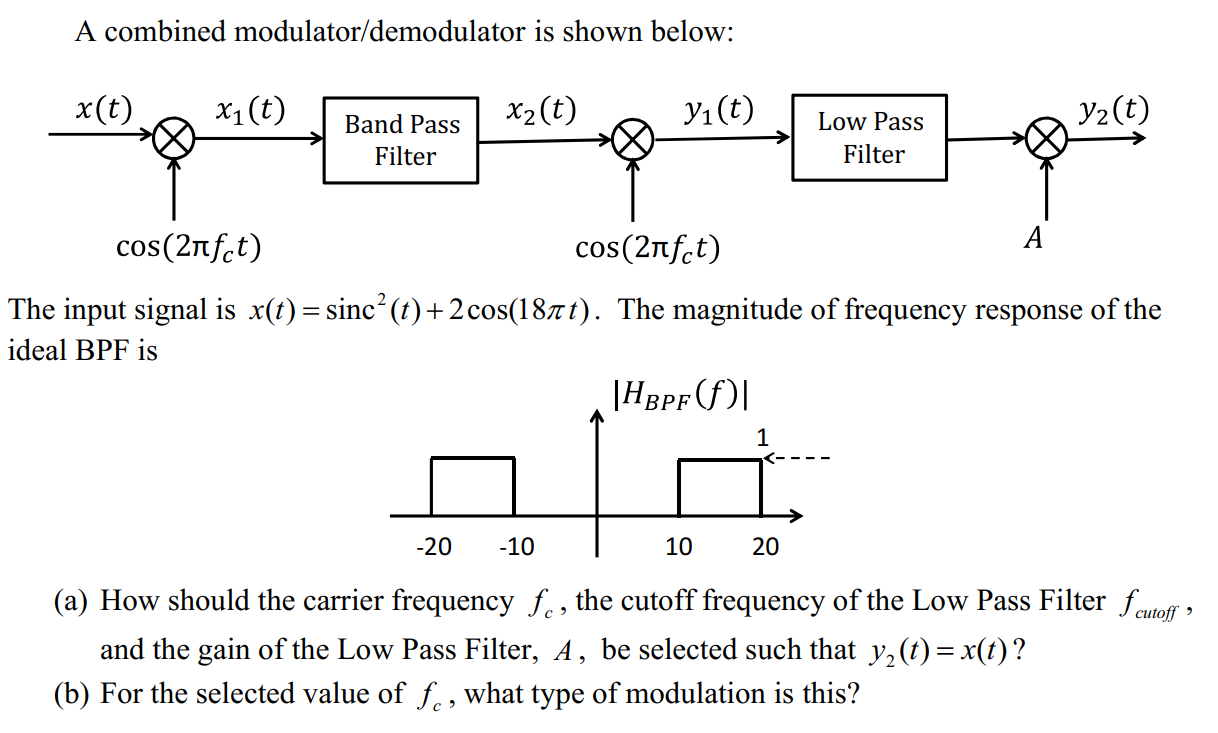A combined modulator/demodulator is shown below: The input signal is x(t) = sinc2(t) + 2cos(18πt). The magnitude of frequency response of the ideal BPF is (a) How should the carrier frequency fc, the cutoff frequency of the Low Pass Filter fcutoff, and the gain of the Low Pass Filter, A, be selected such that y2(t) = x(t)? (b) For the selected value of fc, what type of modulation is this?
